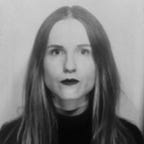Home, my Heimat
Home is where the _________ is…
The linguistical approach to understanding the difference between home and Heimat (the German term) is usually expressed semantically as a place of solitude, an individual house or homestead inhabited by a person and their extended family. Whereas Heimat denotes a broader space, a patria, that more people can call home.
In an attempt to rewrite the concept, artists, curated by Selda Asal, Şirin Fulya Erensoy and Özlem Sarıyıldız, have compiled interpretations of their meaning of home. Funded by the Senate Department for Culture and Europe, the exhibition at Kunstraum Kreuzberg/Bethanien Hall showcases a feminist perspective on the process of home-making.
Artists from Turkey, Iran, Lebanon, Syria, Palestine, Afghanistan, Belarus, Iraq and Ukraine explored through the lens of Sara Ahmed’s “feminist killjoy”. The explored themes included migration, integration and cultural inclusion in Germany. What does it mean to be at home? How does one feel safe if they are home? And with this, how do our identities intertwine in a space that can often challenge expression?
Identities, often expressions of who one is and who one becomes in a new setting, are referred to in the piece by Sara Nabil. A video piece where the artist repeats “I am Sara” works as a statement of her own self-expression. Her identity is dissected in the spaces of gender, seen as a woman in relation to a man in her home in Afghanistan. Now, only to be diminished to refugee status in Germany. Her piece takes the concept of home and reinstates herself, as a form of resistance, by telling viewers that home is self-governed and within you. It can be as simple as saying your name. Repeating the name becomes political.
Immigration is often a binary process, says Şirin in a taz blogs interview, “the notion of home from a migrant perspective is often conceptualized as a binary concept, a here or there, implying duality as its fundamental nature.” The imagined processes of the artists are projected through a collage as you enter the space. The Women’s mindmap shows the processes, understandings and ideas woven together of all the artists who have come from conflict zones and how they interpret home in a new country—sharply looking into the immigration policies and societal institutions, begging the question: who are the gatekeepers of power for the status quo? A power that is often intertwined into the very fibre of our society, reinforcing ‘us’ vs ‘them’ narratives.
The artists’ relocalization from the aforementioned conflict zones explores new spaces, the meaning of a new home under the ever-tightening restrictions of German immigration policies. Discourses of displacement, emplacement and the localization of the “here” and “there” are displayed by Marina Naprushkina in her work Closed to the Public. She explores the fundamental right to asylum and how regulations have been tightened, leaving many asylum seekers with less ability to rely on it. Between 2013 and 2019, she attended court hearings in Moabit. She documented this in drawings and texts, emphasizing the “killjoy” structures that often haunt plaintiffs.
Are We Going Now? is a work by Sümer Sayın and taps into these migration issues through the ensemble of boat paddles constructed in different directions. This work is a metaphor for the idea of escape, highlighting the immediate need to flee without any guidance tools, often resulting in directional confusion. This piece deals with confusion, uncertainty and tension in a poetic way. The paddles show that pulling towards different directions can cause aimlessness, an anxiety often felt by migrants at sea.
Beyond Home is a four-part project:
- exhibition at Kunstraum Kreuzberg/Bethanien
- a caravan trailer
- interactive map from WAWA (Women Artists Web Archive), and
- a newspaper.
Artist AKS displays her work in the centre hall, with white walls and videos projected onto white voile fabric. Entitled Flight nr0, the artist sparks the imagination through different narratives with this work. Focusing on various archives of texts, sounds and movements, AKS creates an immersive experience. The work instigates a feeling of limbo experienced through the situation of migration. The three projected pieces link a story with a unified artistic construction through time. Sounds and movement are woven into each other and express the fragmentation of geography, personal identity and its expression. The voile fabric, layered into three sections, with her voice and body movements projected in fragments, allows viewers to see the multiple perspectives of their expression.
The contradictions of home shed light on diverse experiences that can often be contradictory. Rewriting historical narratives that have often been seen from the perspective of white, heterosexual men, the exhibition explores ways that dismantle stereotypes through intersectional artistic practices in the making. Özlem states that they are creating “a platform for discussion and possible alliances for a more just and equitable future.” What we see today is often a fragmented home. Change only the name and this story could be about you.
The full list of artists are:
Aleksandra Kononchenko,
Amina Maher,
Candaş Baş,
Ceren Oykut,
Havîn Al-Sîndy,
Işıl Eğrikavuk,
Marina Naprushkina,
Razan Sabbagh,
Ronak Moshtaghi,
Ruba Salameh,
Özlem Sarıyıldız,
Sara Nabil,
Seçil Yersel,
Sümer Sayın,
AKS (Selda Asal
with Akman,
Gizem Aksu,
Melika Akbari aka likabari,
Nour Sokhon,
Seda Mimaroğlu
